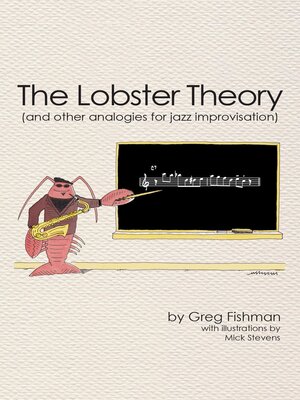
Sign up to save your library
With an OverDrive account, you can save your favorite libraries for at-a-glance information about availability. Find out more about OverDrive accounts.
Find this title in Libby, the library reading app by OverDrive.



Search for a digital library with this title
Title found at these libraries:
| Loading... |
The Lobster Theory is a groundbreaking new approach to learning the language of jazz.
It's a book of musical concepts brought to life through the use of clever analogies, illustrated by New Yorker Magazine cartoonist Mick Stevens. Foreword by Jeff Coffin.
Through eighteen chapters, this educational book shares fresh, creative approaches to the following topics:
Notated musical examples, jazz etude excerpts, educational chord graphs and charts are featured throughout the book to further illustrate and teach the musical concepts.






